Satellite networks form a critical backbone of modern communication systems, with distinct types catering to specific requirements. The discussion around these networks delves into the intricate balance between coverage, latency, and bandwidth. By exploring the unique characteristics of each satellite network type, such as LEO, GEO, MEO, and HEO, a deeper understanding emerges regarding their functionality, advantages, and limitations. As technology advances and demands for global connectivity grow, the evolution of satellite networks continues to shape the future of communications.
Key Takeaways
- LEO, GEO, MEO, and HEO orbits offer distinct coverage advantages for various applications.
- LEO networks excel in low latency and mobile services, while GEO networks provide broader coverage.
- Signal latency varies among MEO and HEO networks, impacting connectivity and operational efficiency.
- Strategic deployment considerations for LEO satellites and cost-effective, reliable services from GEO networks.
Overview of Satellite Networks
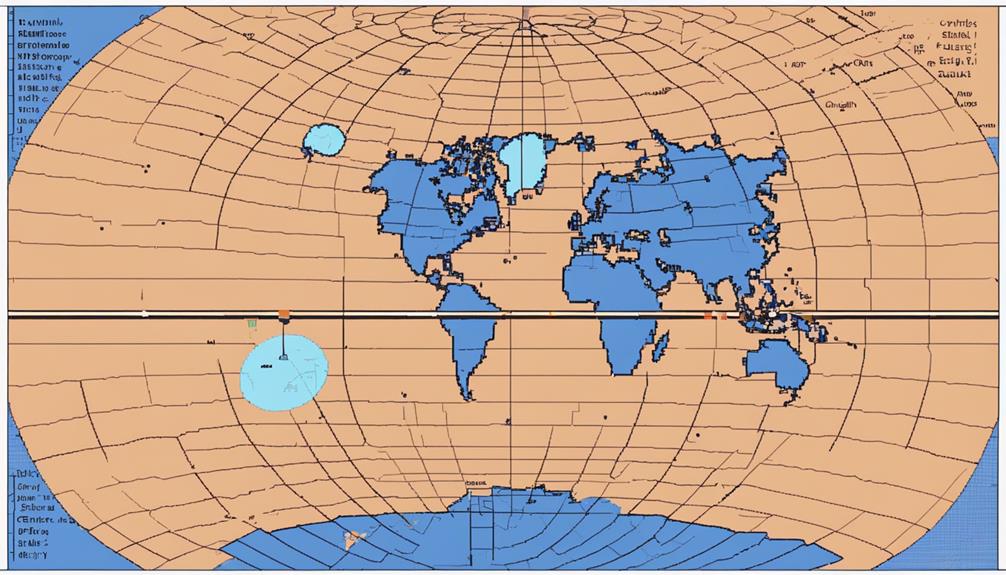
Satellite networks play a crucial role in modern telecommunications, enabling global connectivity through the utilization of different orbital configurations such as Low Earth Orbit (LEO) and Geostationary (GEO) networks. LEO networks, characterized by small satellites in continuous motion close to Earth's surface, offer advantages such as lower latency and continuous coverage, making them ideal for mobile applications requiring real-time data transmission. These networks are cost-effective, making them suitable for on-the-move services, and are commonly utilized by products like Iridium and Globalstar. On the other hand, GEO networks use fewer satellites positioned above the equator to provide broader coverage over fixed Earth areas. Although GEO networks offer superior data bandwidth compared to LEO networks, they come with higher latency and require larger antennas. These networks are typically used for specific communication needs over larger regions and are associated with products like Inmarsat and Thuraya. Understanding the differences between LEO and GEO networks is crucial in determining the most suitable network configuration based on factors such as coverage requirements, latency sensitivity, and cost-effectiveness.
Understanding LEO Satellite Networks
LEO satellite networks operate with satellites in low Earth orbit, distinguished by their proximity to Earth's surface. This closeness enables continuous coverage essential for mobile applications, ensuring seamless connectivity. Notably, the low latency of LEO networks compared to GEO networks makes them well-suited for real-time communication demands.
LEO Satellite Orbits
Circling the Earth at altitudes ranging from 160 to 2,000 kilometers, these swift-moving satellites in Low Earth Orbit (LEO) offer rapid and efficient communication capabilities for various real-time applications. LEO satellite orbits have distinct characteristics:
- Closest to Earth: LEO satellites orbit closest to the Earth's surface compared to other satellite orbits.
- High Speed: Satellites in LEO move swiftly, completing an orbit around the Earth approximately every 90 minutes.
- Low Latency: LEO satellites provide low latency communication, making them ideal for real-time applications.
LEO satellite networks, such as SpaceX's Starlink and OneWeb, leverage these features to ensure global coverage, despite requiring a larger number of satellites due to their lower altitude.
Benefits of LEO
Benefiting from their close proximity to Earth's surface, Low Earth Orbit (LEO) satellite networks offer significant advantages in terms of data transmission speed and latency. LEO satellites orbit at altitudes ranging from 160 to 2,000 kilometers above the Earth's surface, providing low latency and high bandwidth for efficient communication. This makes LEO networks ideal for IoT applications and real-time data transfer. The following table highlights some key benefits of LEO satellite networks:
| Benefits | Description |
|---|---|
| Low Latency | Due to proximity to Earth, data transmission is faster with minimal delays. |
| High Bandwidth | Offers increased data transfer capabilities, crucial for IoT applications. |
| Continuous Coverage | LEO satellites provide uninterrupted connectivity and enhanced mobility. |
| Cost-Effective | Antennas for LEO networks are smaller and more affordable than GEO options. |
| Diverse Applications | Products like Iridium, inReach, and Globalstar utilize LEO solutions widely. |
Characteristics of GEO Satellite Networks

GEO satellite networks operate at a high altitude of about 36,000 km above the equator, providing extensive coverage over fixed Earth areas. Due to their synchronized orbit, GEO satellites remain stationary relative to the Earth's surface. These networks are preferred for applications that benefit from wide coverage, such as TV broadcasting and weather monitoring.
High-Altitude Orbits
High-altitude orbits, specifically those of geostationary satellite networks, are characterized by their stationary positions relative to Earth's surface, enabling continuous coverage of designated regions.
- GEO satellites orbit around 36,000 kilometers above the equator.
- These networks are crucial for TV broadcasting, telecommunications, and weather monitoring.
- GEO satellites offer continuous coverage due to their fixed positions, making them ideal for services requiring uninterrupted connectivity.
Wide Coverage Area
Continuously spanning vast regions with a reduced number of satellites, GEO satellite networks possess the distinct advantage of facilitating wide coverage areas efficiently. These geostationary satellites orbit at the same speed as the Earth's rotation, allowing them to remain fixed relative to the planet's surface. This characteristic enables them to provide stable and continuous coverage over specific regions, making them ideal for applications requiring broad coverage and real-time data transmission. Despite requiring higher power and larger sizes compared to LEO satellites, GEO networks offer consistent communication services due to their stationary position above the equator. The table below highlights key features of GEO satellite networks:
| Feature | Description |
|---|---|
| Coverage Area | Wide coverage over vast regions with fewer satellites |
| Continuous Coverage | Stable and uninterrupted coverage over fixed regions |
| Satellite Characteristics | Stay stationary above the equator, providing consistent communication services |
Applications of MEO Satellite Networks
Applications abound for MEO satellite networks, ranging from GPS services to maritime navigation and crew communications. These networks offer high bandwidth, enabling real-time updates and reliable communication essential for various industries. Here are some key applications of MEO satellite networks:
- GPS Services: MEO satellites play a crucial role in providing accurate and reliable GPS services globally. Their higher altitude allows for better coverage and more precise positioning, making them ideal for navigation systems used in aviation, maritime, and land-based applications.
- Maritime Navigation: MEO satellite networks are extensively utilized in maritime navigation systems to ensure vessels can maintain constant communication and receive up-to-date navigational data. The high bandwidth of MEO satellites supports efficient data transmission, enhancing the safety and efficiency of maritime operations.
- Crew Communications: MEO satellites facilitate seamless communications between crews on ships, aircraft, and remote locations with onshore operations centers. These networks ensure that crew members can stay connected, exchange critical information, and access support services regardless of their location, improving operational coordination and safety.
Benefits of HEO Satellite Networks
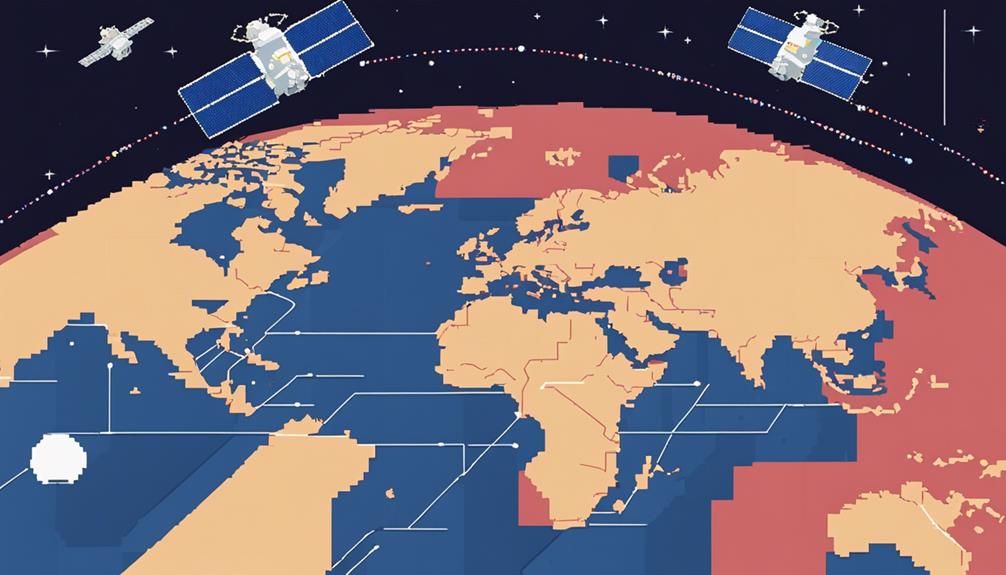
MEO satellite networks, with their diverse applications in navigation and communication, serve as a vital component in the realm of satellite technology, paving the way for exploring the distinct benefits of HEO satellite networks. HEO (Highly Elliptical Orbit) satellite networks offer extended coverage, particularly over polar regions and high latitudes, where traditional satellites struggle to maintain communication. By utilizing satellites with elliptical orbits, HEO networks ensure improved visibility and connectivity in challenging geographic areas where continuous coverage is essential.
One of the key advantages of HEO satellite networks is their provision of enhanced data relay services. These networks play a crucial role in facilitating remote sensing, weather monitoring, and scientific research applications by enabling efficient data transmission and reception. The elliptical orbits of HEO satellites also allow for prolonged dwell times over specific regions, enabling continuous data collection and uninterrupted communication links.
HEO satellite networks are particularly valuable for specialized missions that require focused coverage and extended visibility in polar regions. Their ability to orbit closer to Earth at certain points in their trajectory makes them ideal for scenarios where constant monitoring and communication are necessary. Overall, the benefits of HEO satellite networks lie in their capacity to expand coverage to areas that are typically challenging to reach with conventional satellite systems.
Comparing LEO Vs. GEO Networks
A comparison between Low Earth Orbit (LEO) and Geostationary Orbit (GEO) satellite networks reveals distinct advantages and trade-offs in coverage, latency, and suitability for different communication requirements. LEO networks consist of small satellites in low Earth orbit, offering lower latency and better suitability for mobile applications. On the other hand, GEO networks use fewer satellites in geostationary orbit, providing larger coverage areas but with higher latency and larger antennas. Here are some key points differentiating LEO and GEO networks:
- LEO satellite constellations offer lower latency, making them ideal for applications requiring real-time data transmission like IoT connectivity.
- Geostationary satellites, while providing larger coverage areas, have higher latency, making them more suitable for fixed communication needs over specific regions.
- LEO networks are known for their cost-effectiveness and use of smaller antennas, making them a preferred choice for certain mobile and broadband services.
Key Features of MEO Vs. HEO Networks
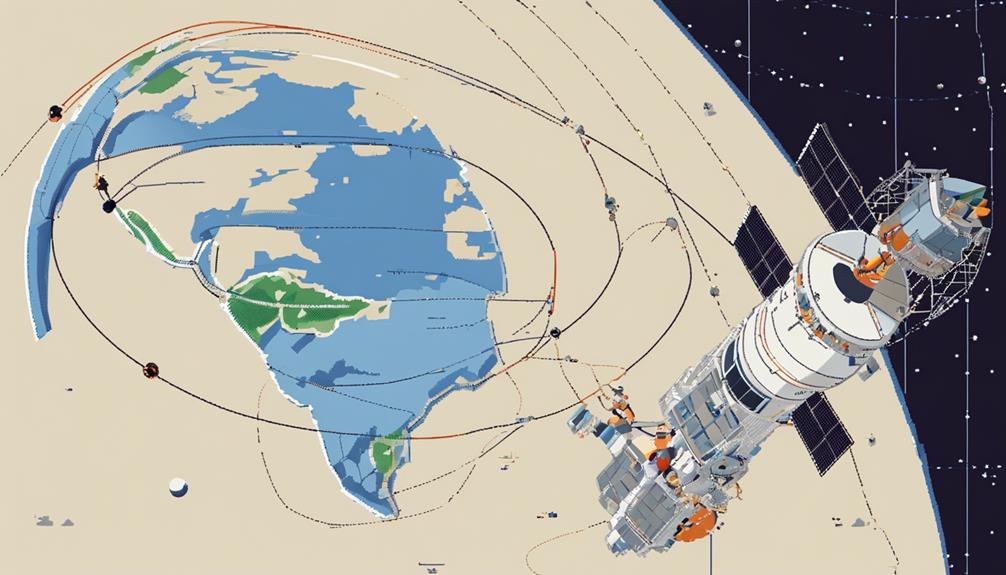
Medium Earth Orbit (MEO) satellites operate at altitudes between 2,000 to 36,000 kilometers, offering a balance between coverage and latency. In comparison, High Earth Orbit (HEO) networks may provide unique coverage advantages, but can suffer from signal latency variations due to their higher altitudes. Understanding these distinctions is crucial for optimizing satellite network design and functionality.
MEO Orbit Advantages
Operating in a strategically positioned orbit above Earth's surface, satellites in the Medium Earth Orbit (MEO) network deliver enhanced coverage and lower latency compared to their High Earth Orbit (HEO) counterparts.
- Greater Coverage Area: MEO satellites offer broader coverage compared to LEO satellites, making them suitable for global communication and navigation services.
- Lower Latency: Closer proximity to Earth allows MEO satellites to provide lower latency connections, enhancing the speed and efficiency of data transmission.
- Improved Connectivity: MEO networks help ensure more reliable connectivity by mitigating outages caused by extreme weather conditions, offering consistent and dependable service for various communication needs.
HEO Coverage Comparison
Positioned at higher altitudes above Earth's surface, High Earth Orbit (HEO) satellites offer specialized coverage and services distinct from Medium Earth Orbit (MEO) networks. While MEO satellites orbit at altitudes between 2,000 to 36,000 km, providing extensive coverage, HEO networks serve specific applications requiring unique functionalities beyond MEO capabilities. MEO networks, exemplified by GPS, ensure lower latency, enhancing communication and navigation services' efficiency. HEO satellites, placed further away, cater to specialized needs like deep space exploration or remote sensing applications, focusing on distinct communication services. Additionally, MEO satellites excel in mitigating outages caused by severe weather conditions, enhancing reliability for critical communication requirements. The choice between MEO and HEO networks depends on the specific coverage and functionalities needed for the intended application.
Signal Latency Variations
Comparing signal latency between Medium Earth Orbit (MEO) and High Earth Orbit (HEO) networks reveals crucial differences in network performance, particularly in the context of communication efficiency and coverage optimization.
- MEO networks offer lower latency than HEO networks, enhancing real-time communication capabilities.
- MEO satellites, positioned between LEO and GEO satellites, provide moderate signal latency, balancing coverage and signal delay.
- HEO networks, with higher altitudes above Earth, exhibit increased signal latency, impacting communication efficiency.
Understanding these signal latency variations is essential for optimizing network performance, ensuring efficient data transmission and reliable connectivity across different satellite network architectures.
Challenges in Deploying LEO Satellites
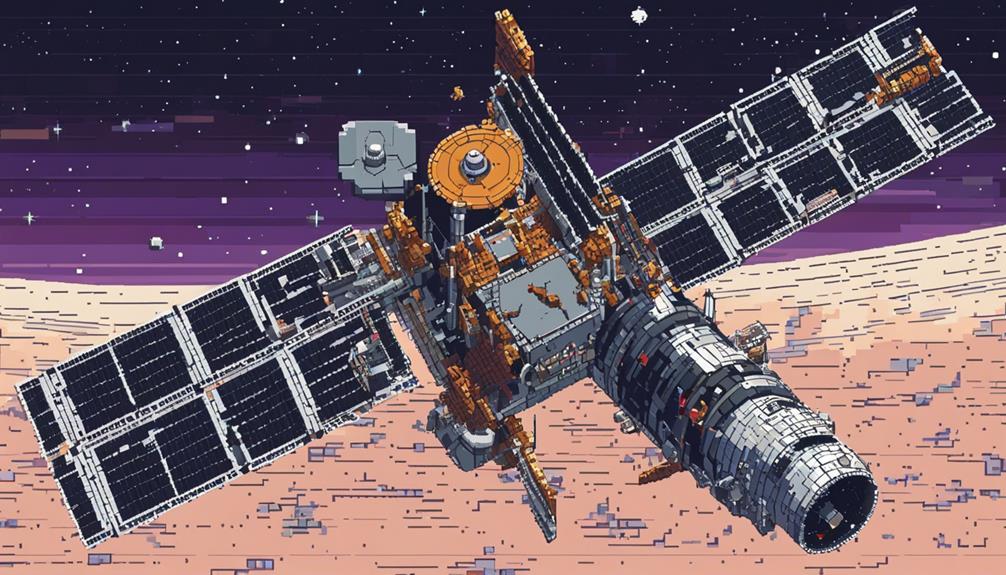
In the realm of satellite technology, the deployment of LEO satellites presents a myriad of challenges that demand meticulous coordination and sophisticated maneuvering capabilities. When deploying LEO satellites, multiple small satellites are launched into low Earth orbit, requiring precise timing and positioning within the constellation. This coordination is essential to ensure continuous coverage, which involves complex orbital maneuvers and synchronization to manage handoffs between rapidly moving satellites.
One of the key technical hurdles in deploying LEO satellites is overcoming signal handoffs between these swiftly moving satellites. This challenge necessitates the development of robust communication systems capable of seamlessly managing these handovers. The communication systems must be designed to facilitate efficient and reliable data transmission despite the dynamic nature of LEO satellite networks.
Furthermore, the deployment of LEO satellites also requires addressing the issue of signal latency variations due to the satellites' orbital characteristics. Ensuring consistent and low-latency communication across the network is crucial for applications that rely on real-time data transmission. Therefore, deploying LEO satellites involves not only launching the satellites into orbit but also implementing sophisticated communication systems to overcome the challenges associated with their deployment.
Advantages of GEO Satellite Communication
GEO satellite communication networks offer distinct advantages in providing global coverage efficiently and cost-effectively. These networks have several key strengths that make them ideal for various communication needs:
- Global Coverage: GEO satellite networks can cover the entire globe with fewer satellites, reducing deployment costs and simplifying network management.
- Stable Connections: These networks provide stable connections that are well-suited for fixed communication requirements over specific regions or continents, ensuring reliable communication services.
- High Data Bandwidth: Despite higher latency compared to LEO networks, GEO satellites offer higher data bandwidth capabilities, enabling efficient and rapid data transmission for various applications.
GEO satellite networks are particularly favored for broadcasting, telecommunication, and other services that necessitate wide area coverage. Their ability to stay stationary above the equator allows for continuous coverage of designated areas, making them a preferred choice for applications requiring consistent and reliable connections over vast geographical regions.
Use Cases for MEO Satellites
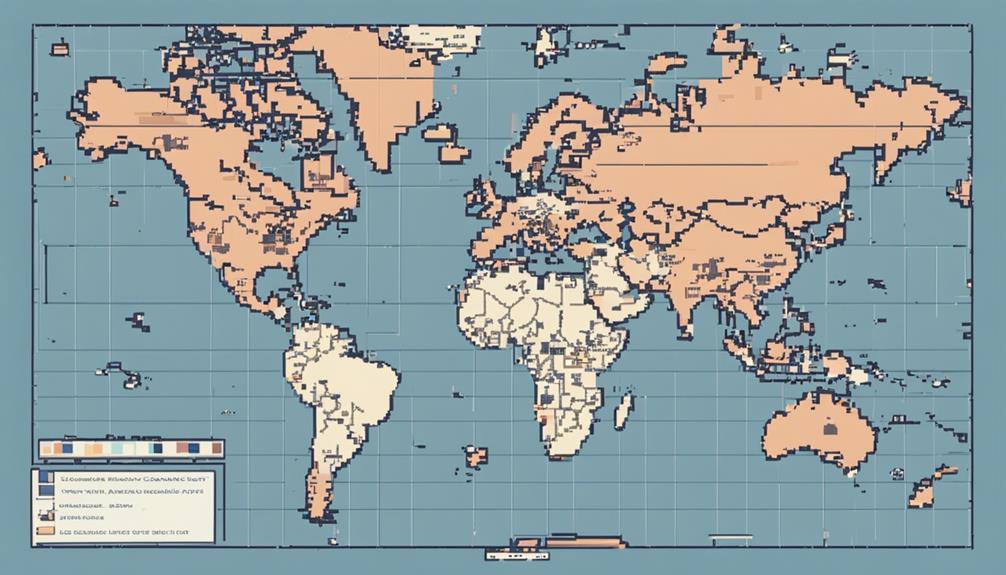
MEO satellites offer a crucial advantage in applications requiring lower latency and reliable connectivity, making them ideal for real-time data transmission. Their medium-altitude orbits of 2,000-36,000 km above Earth contribute to improved signal quality, particularly in maritime navigation and crew communications. By mitigating signal disruptions caused by adverse weather conditions, MEO satellites play a vital role in ensuring continuous and uninterrupted satellite services.
MEO Satellite Advantages
Among the different types of satellite networks, medium Earth orbit satellite advantages encompass a range of crucial applications in various industries.
- Provide low latency and high bandwidth capabilities.
- Offer greater coverage compared to LEO satellites.
- Serve as cost-effective solutions for businesses in transportation, logistics, and emergency services.
MEO Satellite Applications
Medium Earth orbit (MEO) satellites are extensively utilized across various industries for critical applications such as GPS, maritime navigation, and crew communications due to their low latency and high bandwidth capabilities. These satellites are ideal for real-time applications that require stable connectivity and efficient data transmission. MEO satellites help ensure reliable communication by offering low latency, enabling swift data transfer essential for time-sensitive operations. Their high bandwidth capacity allows for the seamless transmission of large volumes of data, making them suitable for applications where real-time information is crucial. Moreover, MEO satellites play a key role in maintaining stable connectivity, particularly in areas prone to outages caused by extreme weather conditions, ensuring uninterrupted service for users relying on consistent communication links.
Innovations in HEO Satellite Technology
Amidst the rapidly evolving landscape of satellite technology, advancements in High Elliptical Orbit (HEO) satellite systems are revolutionizing the capabilities of satellite networks. HEO satellites operate in highly elliptical orbits with apogees much higher than geostationary satellites, offering unique advantages for specific mission requirements. Some key innovations in HEO satellite technology include:
- Extended Coverage: HEO satellites provide extended coverage over high latitudes, enabling communication services in polar regions where traditional satellites may have coverage limitations.
- Enhanced Monitoring Capabilities: These satellites offer longer dwell times over specific areas of interest, allowing for enhanced monitoring capabilities in applications such as weather monitoring and surveillance.
- Improved Communication Services: HEO technology facilitates communication in challenging geographic locations by leveraging its extended coverage and unique orbit characteristics.
HEO satellites play a vital role in applications requiring continuous monitoring and communication services in areas where traditional satellite networks face limitations. The ability of HEO satellites to offer extended coverage over high latitudes and provide prolonged visibility over specific regions makes them invaluable for missions that demand reliable connectivity and data transmission.
Future Trends in LEO Networks

The progression of satellite technology continues as future trends in Low Earth Orbit (LEO) networks, exemplified by innovations like Starlink, herald a new era of global connectivity and communication capabilities. Advancements in LEO networks are driving towards achieving global coverage, offering low-latency connectivity, and enhancing data speeds for users worldwide. These improvements are set to revolutionize how we access information and communicate across vast distances.
To illustrate the future trends in LEO networks, the following table outlines the key advancements shaping this landscape:
| Advancements | Description | Benefits |
|---|---|---|
| Global Coverage | Extending network reach to provide connectivity worldwide | Facilitates communication on a global scale |
| Low-Latency Connectivity | Minimizing delays in data transmission for real-time applications | Enables seamless interactions and operations |
| Data Speeds | Enhancing the rate of data transfer for quicker exchanges | Improves efficiency and user experience |
| High-Speed Data Transmission | Enabling rapid data delivery for bandwidth-intensive tasks | Supports high-demand applications effectively |
The future of LEO networks holds the promise of high-speed data transmission, low-latency connectivity, and unparalleled global coverage, offering users unprecedented levels of connectivity and communication capabilities. As competition in the LEO market intensifies, we can expect further innovations and advancements that will continue to shape the landscape of satellite networks in the years to come.
GEO Satellite Network Infrastructure
Operating in Geostationary Earth Orbit at an altitude of approximately 36,000 km above the equator, GEO satellite networks are a fundamental component of global communication infrastructure. These networks consist of GEO satellites that provide stable and continuous coverage for various communication services. Here are some key points about GEO satellite network infrastructure:
- Efficient Coverage: GEO networks typically require fewer satellites compared to LEO networks to cover specific regions on Earth due to their high altitude and coverage area per satellite.
- Stable Communication Services: GEO satellites appear stationary relative to Earth's surface, making them ideal for fixed communication needs such as broadcasting, weather monitoring, and telecommunication backbones.
- Latency Considerations: Despite their advantages, GEO networks exhibit higher latency, averaging around 0.25 seconds. This latency is primarily due to the greater distance between the satellites and Earth compared to LEO networks.
MEO Satellite Constellations

At medium altitudes ranging from 2,000 to 36,000 km above Earth, MEO satellite constellations play a crucial role in global navigation and communication systems. These constellations are instrumental in providing lower latency and more reliable communication compared to geostationary satellites. By operating closer to Earth, MEO satellites can offer reduced signal travel times, enhancing the speed of data transmission for applications requiring real-time connectivity.
One of the key advantages of MEO satellite networks is their ability to cover larger areas, ensuring broader connectivity and reducing the likelihood of communication disruptions. This feature is particularly beneficial for services like GPS navigation, where continuous and uninterrupted signal reception is essential. Additionally, MEO satellite constellations help mitigate outages caused by factors such as extreme weather conditions, making them a dependable choice for critical communication needs.
Moreover, MEO satellite networks provide high bandwidth capabilities, enabling them to support the transmission of large volumes of data efficiently. This high-speed data transfer capability is essential for applications that demand rapid information exchange over vast geographical regions. Overall, MEO satellite constellations represent a valuable asset in the realm of satellite communication, offering a blend of lower latency, reliable connectivity, and high bandwidth to meet diverse user requirements.
Critical Considerations for HEO Deployment
Enhancing orbital efficiency through strategic trajectory planning is a pivotal consideration for the successful deployment of Highly Elliptical Orbit (HEO) satellite networks. HEO satellites, with their highly elongated orbits, offer extended coverage over specific regions such as polar areas and high latitudes. This extended coverage enables enhanced visibility and communication capabilities in hard-to-reach areas where conventional satellite networks may struggle to provide consistent service.
- Precise Orbital Maneuvers: HEO deployment necessitates accurate orbital maneuvers to optimize coverage and communication performance. Due to the unique trajectory of HEO satellites, precise orbital adjustments are crucial for ensuring reliable connectivity in targeted areas.
- Specialized Applications: HEO networks are commonly utilized for specific applications such as remote sensing, surveillance, and communication in extreme latitudes. These satellites play a critical role in facilitating communication services in regions where traditional satellite constellations may face limitations.
- Strategic Coverage Planning: Given the specialized nature of HEO satellites and their focus on specific regions, strategic coverage planning is essential. By carefully planning the satellite constellation layout and trajectory, operators can maximize the benefits of HEO deployment for improved communication services in challenging environments.
Frequently Asked Questions
What Are the 4 Main Types of Satellites?
When exploring the realm of satellites, one encounters four prominent types: Geostationary satellites, LEO satellites, and MEO satellites, each with distinct orbits and applications. These satellites, together with their varying altitudes and coverage capabilities, form the backbone of modern satellite technology. Understanding their unique characteristics is crucial for optimizing communication, navigation, and Earth observation systems.
What Are the 3 Types of Satellite Communication?
Satellite communication encompasses three primary types: Geostationary Orbit (GEO), Low Earth Orbit (LEO), and Medium Earth Orbit (MEO). Each type offers distinct advantages in terms of coverage, latency, and capacity. GEO satellites excel in broadcasting and telecommunication backbones, LEO satellites provide strong point-to-point communication signals, and MEO satellites, commonly used for GPS, strike a balance between coverage and latency. Understanding these satellite technologies is crucial for optimizing satellite network performance.
What Is Type of Satellite Network?
When discussing the type of satellite network, it is essential to consider factors such as Geostationary Orbit, Low Earth Satellite Constellations, Satellite Coverage, Bandwidth Allocation, Latency, Signal Interference, Tracking, and Orbital Dynamics. This information aids in understanding the distinct characteristics and operational parameters of each network type. By delving into these specifics, a comprehensive overview of satellite network functionality and optimization can be achieved.
What Are the Three Main Groups of Satellites?
The three main groups of satellites are distinguished by their orbits: Low Earth Orbit (LEO), Medium Earth Orbit (MEO), and Geostationary Orbit (GEO). LEO satellites offer low latency and global coverage, MEO satellites provide stable connectivity over large areas, and GEO satellites are positioned at 36,000 km above the equator for high data rates and consistent coverage. Each group serves specific purposes in satellite technology and applications based on their orbits and coverage capabilities.
